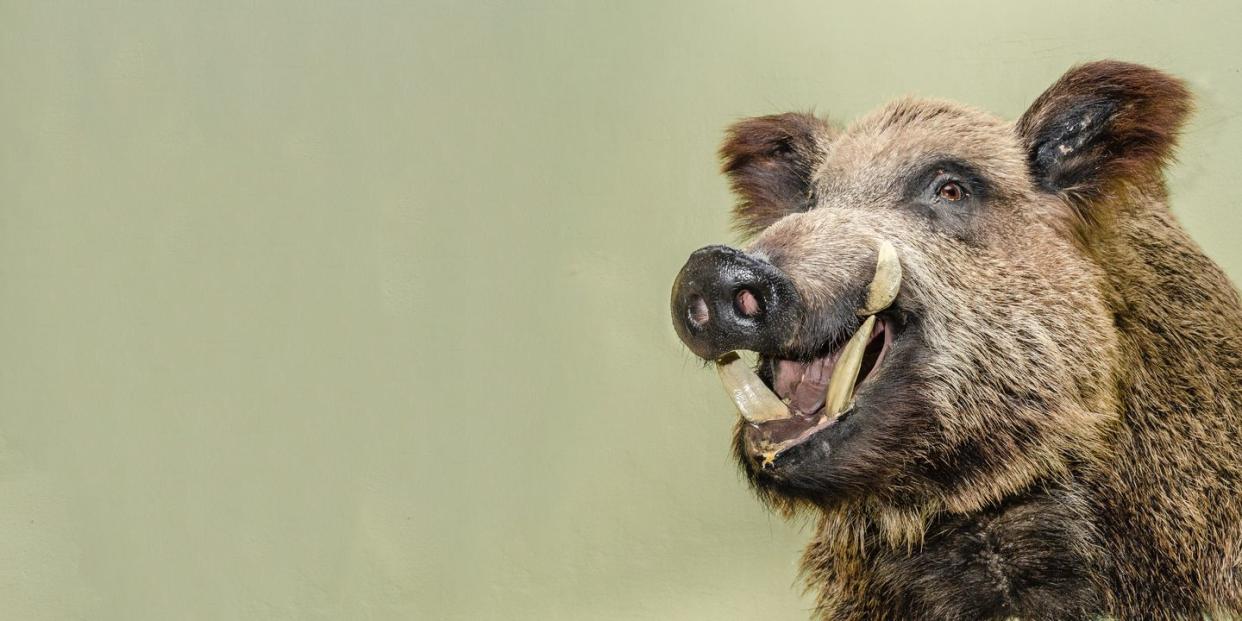'Perfect' Feral Pigs Are Casually Destroying the Country. No One Can Stop Them.

Programs to reduce feral hog populations haven’t made a dent in the destruction path brought by the animals.
The hunt is on for a way to efficiently reduce the population of feral hogs.
The rise of the feral hog has been a steady process with inbreeding of various breeds of swine.
Call them whatever you want: feral hogs, wild swine, or anything similar. The underlying meaning is the same—unencumbered destruction.
The persistent wild pig problem isn’t showing any signs of slowing. In fact, a recent report from WIRED highlights failing efforts to control the population and spells out a dire situation where no real solutions exist to the $2.5 billion per year damage issue. That price tag, by the way, doesn’t even take the disease-transmitting capabilities of these swine into account.
“If you wanted to create the perfect invasive species, one that could pretty much live anywhere, could eat anything, had a very high reproductive rate, was extremely destructive, and was also very difficult to control, you would have to look no further than the wild pig,” John “Jack” Mayer, a technical program manager at the federal Savannah River National Laboratory in South Carolina, and a noted authority on feral swine, tells Wired. “They can live just about anywhere, from the frozen Canadian prairie provinces down to the hot, humid deserts of the American Southwest and all parts in between. They are the ultimate survivor.”
We’ve only seen the footprint of feral hogs increase over time. Since various breeds of swine were first imported onto the continent—potentially as far back as the 1500s—they have crossbred with domestic pigs and imported boars to create an animal incredibly well-suited to its new environment.
For a time, the infestation was largely contained to the southeastern United States. But that’s no longer the case. The WIRED story purports that bounties placed on the pigs have increased their population spread, as people transported feral hogs to new locations in the hopes of increasing their chances of making money or taking advantage of a new hunting option. And on top of that, recent reports warn that cold-hearty Canadian breeds are beginning to expand their range south.
It isn’t good news. The wild pigs chow down on virtually anything—destroying crops or landscapes at equal opportunity, and ruining habitats for native species—and have no problem using their sharp tusks and brute strength to drive out any animals in their way.
“Nobody here ever saw wild hogs when I was a kid,” Will Harris, a livestock farmer in Georgia, tells Wired. “Today, it’s an incredible problem. Especially for row crop farmers, the losses can be devastating, because they root and root and destroy many acres. My livestock manager and our cowboys are shooting them all the time.”
Feral hogs are on the rise, and it seems like there’s really nothing we can do to stop them. Early on, trapping and euthanizing large groups worked well, helping to eliminate the spread of these hogs in seven states and reduce their presence in others. But the hunting hasn’t worked, either because of the folks moving them around or the hogs learning to go nocturnal, sidestep traps, and avoid engine noise.
And now, the U.S. Department of Agriculture says their range has begun to spread inland—heading west from the East Coast and north from the Gulf Coast—at a rate of up to eight miles per year.
Now the hunt is on for a solution. Suggestions currently include such options as a poison that works in pigs (and doesn’t harm anything else), but people seem open to a wide variety of ideas. For now, though, the pig problem remains.
You Might Also Like


